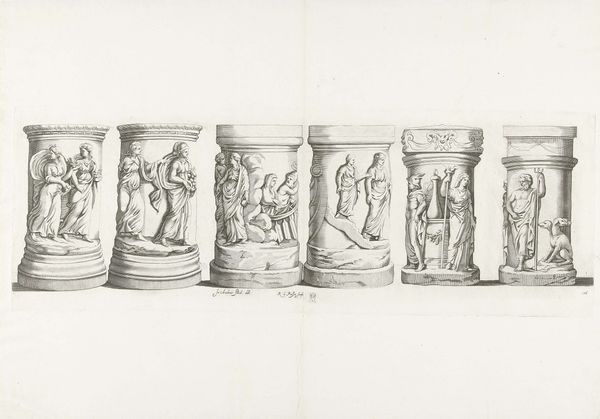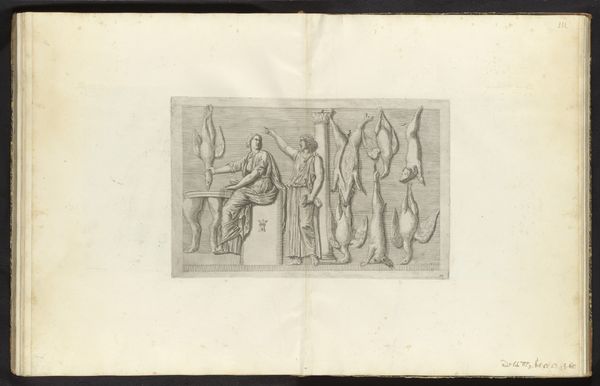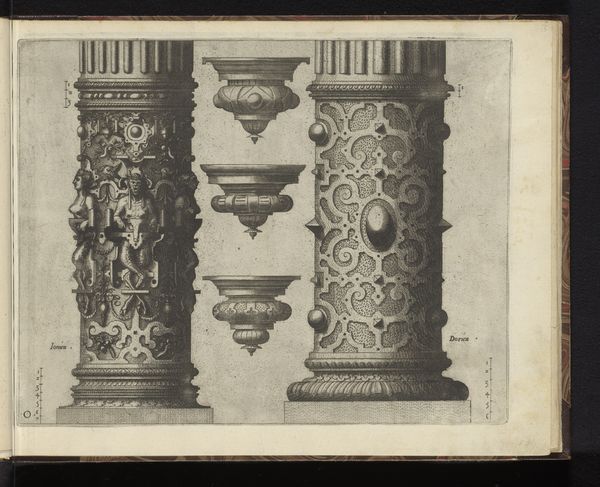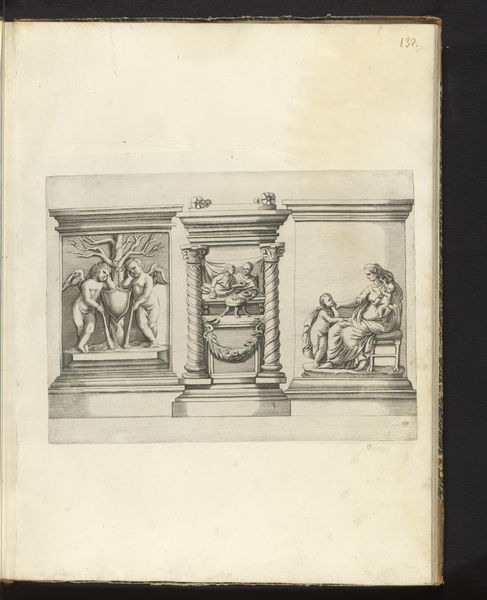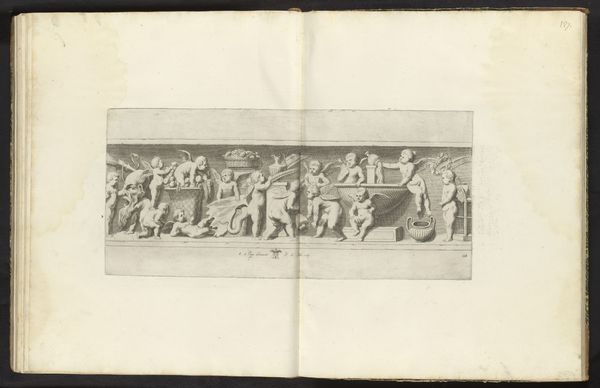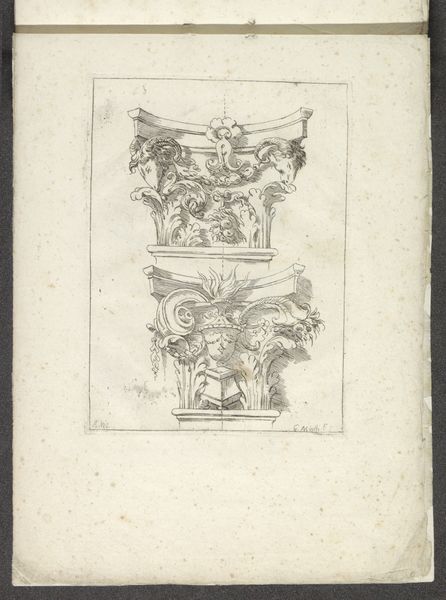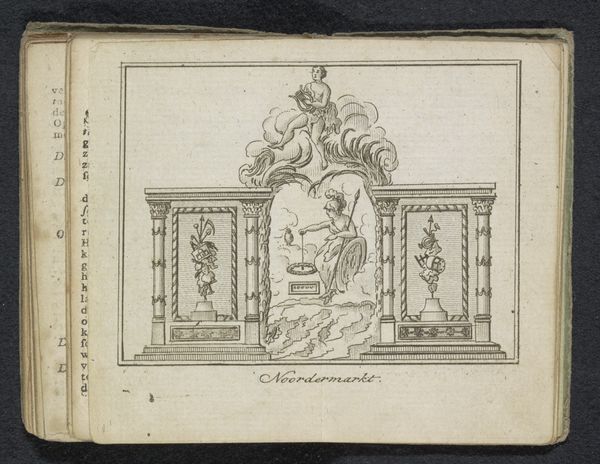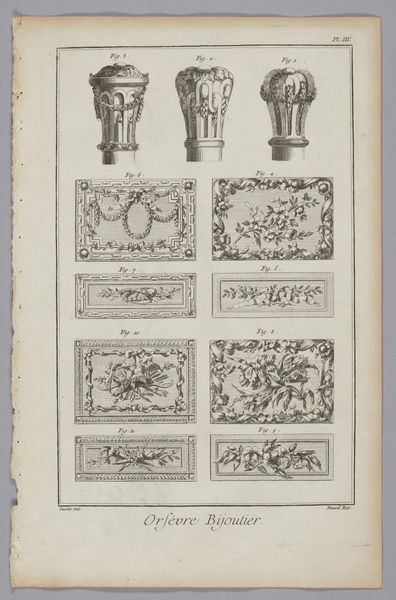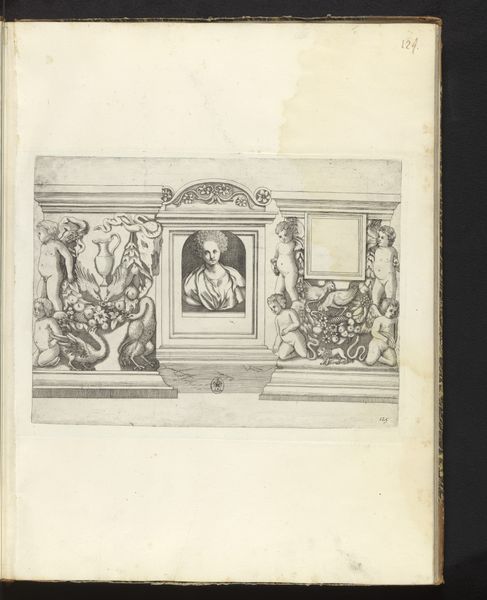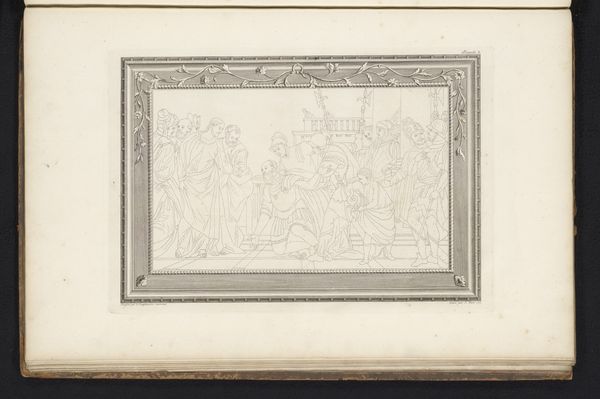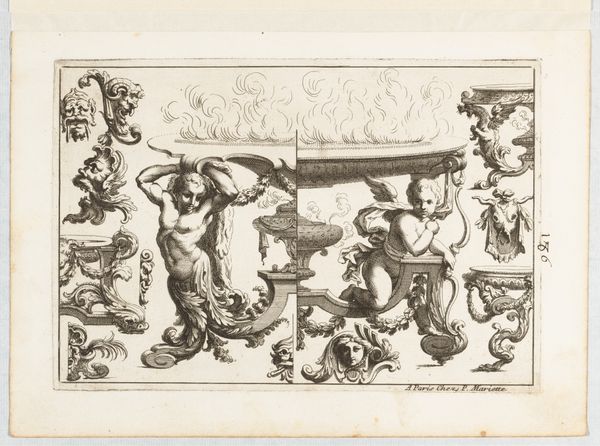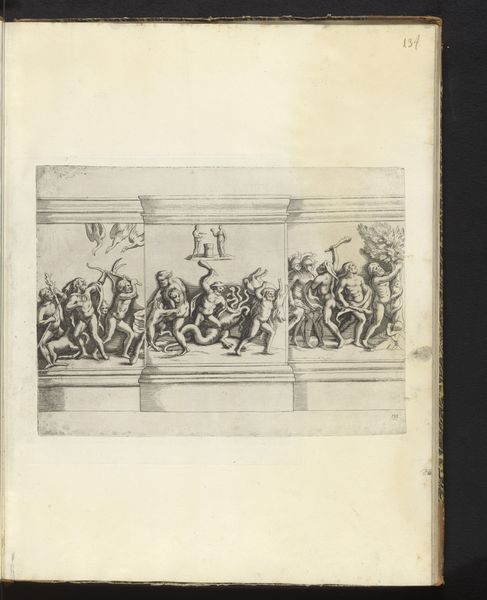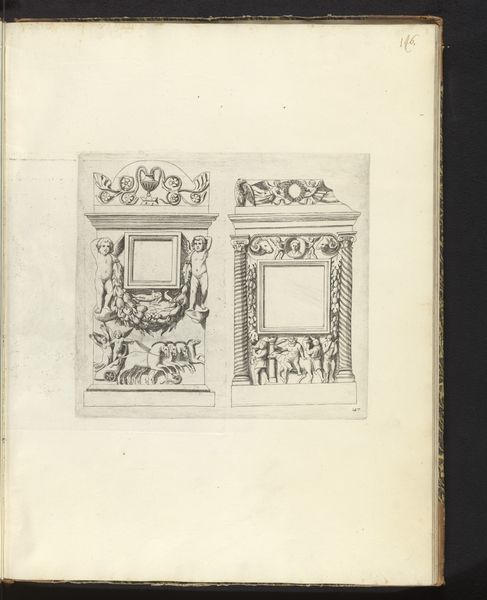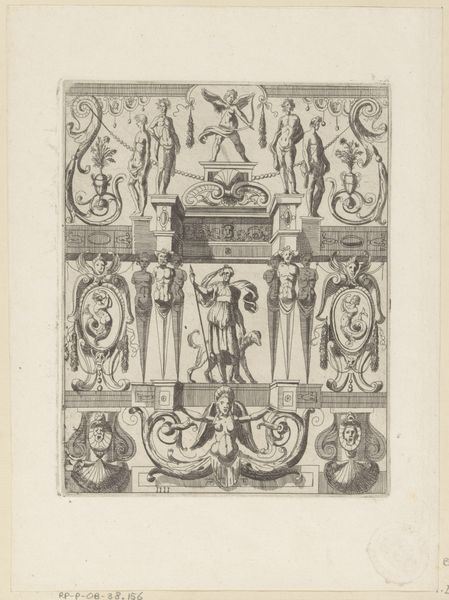
drawing, print, relief, ink, engraving
#
drawing
#
baroque
# print
#
pen sketch
#
relief
#
figuration
#
ink
#
history-painting
#
engraving
Dimensions: height 242 mm, width 680 mm
Copyright: Rijks Museum: Open Domain
Curator: Here we have "Three Round Pedestals," a print made between 1636 and 1647 by Gabriel Ladame. It's currently housed here at the Rijksmuseum. Editor: They look… staged. Cold, almost. Like actors frozen in classical poses. Curator: It is an engraving, ink, and pen drawing on paper, typical of the Baroque era when there was renewed interest in classicism but seen through the lens of courtly drama and religious fervor. What seems "staged" might actually be the intention. These pedestals weren’t merely decorative; they were symbolic. Editor: Symbolic of what? Power? Virtue? Oppression? I'm seeing a lot of idealized figures, particularly women, presented in very specific, potentially restrictive roles. Who were these images for, and what did they communicate about the ideal female figure in the context of the seventeenth century? Curator: This era in the Dutch Golden Age was indeed a time of both prosperity and strict social codes, including norms around gender. This print would have likely circulated among an educated, elite audience. This sort of imagery often functioned as moralizing allegories for personal conduct, and perhaps even dynastic display or social aspiration. There is a possible intersectional critique about social class, since obviously access to these sculptures and prints was tied to it. Editor: So these images reinforced existing power structures. What kind of social behaviors do these pieces praise and legitimize? Curator: The pedestals display scenes representing themes such as love, fidelity, and historical or mythological narratives designed to instruct and uplift viewers and instill a specific sensibility tied to their gender identity, class and other types of performance. The artistic license also served in this case to construct reality. Editor: Thanks, these reflections around historical narratives have truly expanded my reading of the scene. Curator: I am happy to hear this.
Comments
No comments
Be the first to comment and join the conversation on the ultimate creative platform.
